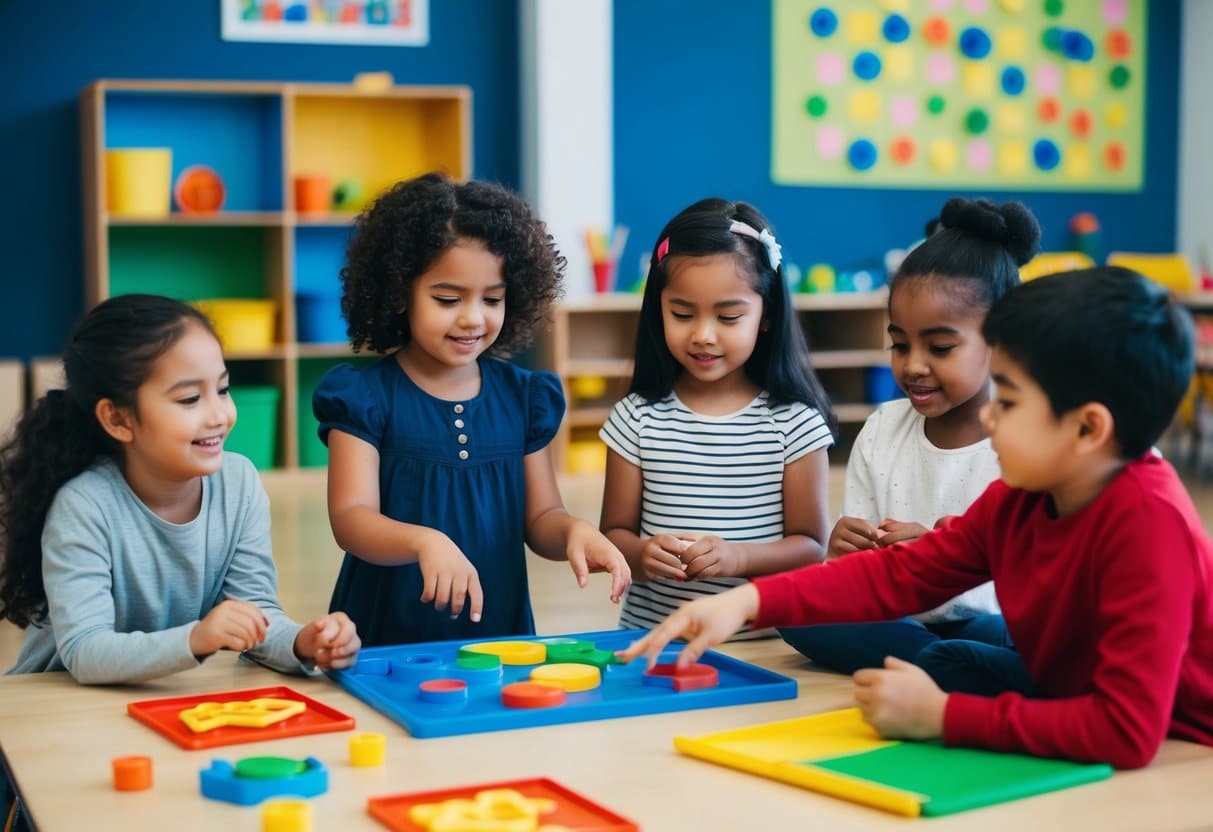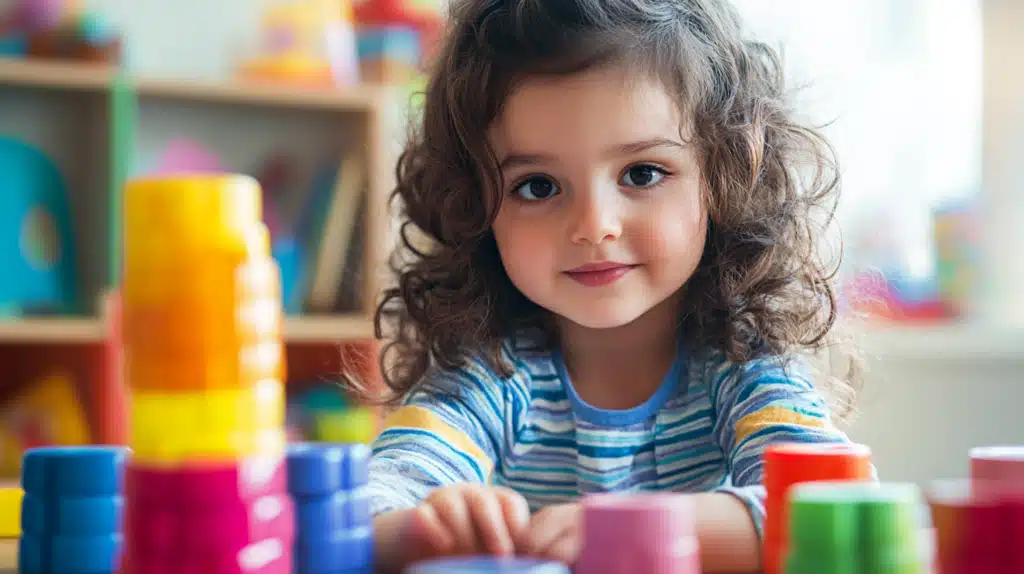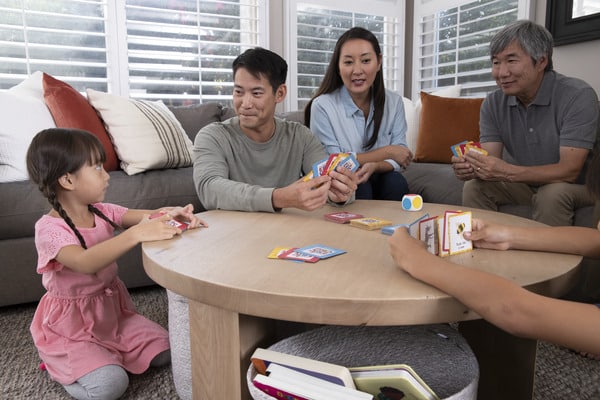Raising children with emotional intelligence and self-regulation skills is crucial in today’s world. As parents and caregivers, we constantly look for fun and effective ways to nurture these abilities.
Play is a natural part of childhood, and it offers more than just entertainment. Through creative play, we can teach essential life skills that will benefit our children as they grow.
Exploring different play ideas can provide us with valuable opportunities to support our children’s development in an engaging way.
1) Role-Playing Real-Life Scenarios
We can help children learn emotional intelligence by using role-playing. This activity allows kids to act out different situations they might face. Through these scenarios, they can explore feelings and reactions.
Pretending to face real-life challenges helps children practice handling emotions. We can create simple situations like sharing toys or dealing with frustration. This helps them figure out how to respond in real situations later.
When kids take on different roles, they learn to see things from another person’s perspective. This leads to empathy and better social skills. We should encourage them to think about how others might feel in each situation.
Role-playing also gives children a safe place to make mistakes and learn from them. If they respond poorly, we can guide them toward better choices. It’s important for us to provide gentle feedback.
Practicing in a playful way helps children build confidence in managing their emotions. They begin to understand that everyone has different feelings and ways of seeing the world. This activity can be fun and educational at the same time.
2) Parallel Play and Parent Modeling
Parallel play allows children to observe and learn from us while engaging in their own activities. This approach is especially helpful in teaching emotional intelligence and self-regulation through everyday actions.
For example, while our child enjoys quiet solo play, we can use a walking pad treadmill, allowing us to stay active and boost our well-being while creating a calm, focused environment for them.
As they see us moving steadily, maintaining balance, and staying engaged, they absorb valuable lessons about patience, mindfulness, and persistence.
Without needing direct instruction, our actions become a model for emotional regulation. The gentle sound of footsteps and the steady pace reinforce a sense of consistency and focus, helping children develop self-regulation skills naturally.
3) Feelings Charades
Feelings Charades is a fun way for us to help our kids recognize and express emotions. This game not only gets everyone involved but also teaches children to understand different feelings.
We start by writing down various emotions on slips of paper. Examples include happy, sad, excited, and frustrated. We place these slips into a bowl.
Each player takes turns picking a slip and acting out the emotion without speaking. The rest of us try to guess the feeling. This encourages observation and empathy as we watch and interpret the emotional expressions.
When we guess correctly, we discuss times when we felt that way. Sharing helps our children connect emotions to real-life experiences. This strengthens their understanding of emotional responses.
Feelings Charades can be played anywhere. It’s a flexible and enjoyable way to enhance emotional intelligence. It brings awareness to how we express and interpret feelings in everyday life.

4) Storytelling with a Twist
We all know how much kids love stories. So why not add a twist to make storytelling more educational? We can start by using familiar tales and asking kids to change parts of the story. Maybe the characters take a different path or make a new choice. This helps them think about different outcomes.
Asking questions encourages them to see things from another viewpoint. For example, how might the wolf feel in “Little Red Riding Hood”? We can discuss how each character feels during the story. This helps our kids understand emotions better.
Let’s encourage them to create their own endings. This will teach problem-solving and empathy. It’s a fun way for us to explore emotions together and learn about self-regulation. During the process, kids practice patience and creativity.
These small changes make storytelling exciting and educational. Our role is to guide and support them as they learn valuable emotional skills.
5) Calming Sensory Play
Calming sensory play helps children manage emotions. We can use simple tools like sand, water, or soft fabrics. These items feel soothing and can keep kids focused.
Creating a sensory bin is an easy option. Fill it with rice, beans, or small balls. Letting kids explore with their hands encourages relaxation and concentration.
We can also add calming scents like lavender. A few drops on a cotton ball can create a peaceful environment. This helps children unwind and feel secure.
Playing with dough or clay offers another calming activity. Kneading and shaping with their hands allows them to release tension. It gives them a creative outlet, too.
Water play can be calming as well. We can fill a basin with water and add floating toys or cups. This offers gentle, soothing fun that engages the senses.
6) Emotion Color Matching
Emotion Color Matching is a fun way for us to help children understand their feelings. We use colored cards or objects, each representing a different emotion. For example, red might stand for anger, while blue represents sadness.
We can ask kids to pick a color that matches how they feel. This gives them a simple way to identify and express their emotions. Talking about why they chose a certain color helps guide them toward a better understanding of their feelings.
This activity also encourages empathy. When children see what colors others choose, they start to recognize different emotions. They learn that everyone can feel different emotions, fostering understanding and connection.
Taking part in this exercise builds emotional intelligence in a playful setting. It’s an engaging way for us to teach kids essential social skills while also giving them a fun and creative outlet.
7) Music and Movement Games
Music and movement games can be a great way for kids to learn while they play. We can use these games to help children explore their emotions and practice self-control. When kids move to music, they express feelings and learn to regulate their bodies.
One fun game is Freeze Dance. We play music and let kids dance freely. When the music stops, they must freeze in place. This teaches self-control and patience. Kids love the challenge and excitement of waiting for the music to start again.
Another idea is Musical Statues. Similar to Freeze Dance, this game helps children learn to follow cues. Each time the music pauses, kids must hold their pose. It’s a fun way for them to practice mindfulness as they listen closely to the music.
Singing together can also boost mood and build connections. We can encourage kids to sing songs with different emotions, like happy, sad, or silly. This helps them identify and express their own feelings through music.
Frequently Asked Questions
Our play ideas help children learn about emotions and manage their feelings through games and activities. Each activity is grounded in science to ensure our children grow in a supportive and educational environment.
How can I support my child’s emotional intelligence through play?
We can use role-playing with real-life scenarios to help our children understand emotions. Through these games, kids learn empathy by seeing different perspectives. It’s an interactive way to explore feelings together.
What types of activities can enhance self-regulation for various age groups?
Parallel play and calming sensory activities work well for different ages. Younger children might enjoy quiet play with sensory bins. Older kids can engage in role-playing scenarios that teach patience and impulse control.
Are there specific emotional learning games suitable for classroom settings?
Feelings charades and storytelling with a twist are great for classrooms. They encourage kids to express emotions and understand their classmates’ feelings. These activities can be fun and engaging for all students.
Can you suggest some age-appropriate activities that improve emotional regulation in children?
For young children, calming sensory play is effective. Older kids might benefit from role-playing scenarios that involve negotiation and problem-solving, which teach them to manage their emotions in challenging situations.
What evidence-based strategies can I use to teach emotional intelligence at home?
We can model behavior during parallel play. Showing empathy and expressing our feelings sets an example. Storytelling games encourage kids to express their emotions in a creative and supportive space.
How can parents and caregivers add emotional intelligence teaching to everyday play?
We can use everyday situations as teaching moments. Simple role-playing during routine activities adds valuable lessons. It creates opportunities for kids to practice self-regulation and understand various emotions.















